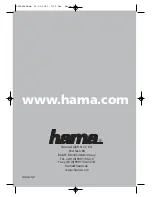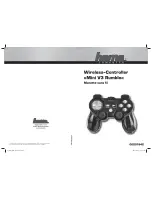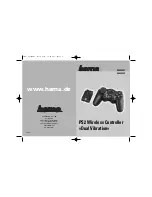
26-5
Chapter 26: Relay Output Module
Notes on Correct Use
The Relay Output Module can be used to control a wide variety of AC and DC devices.
However, care must be taken to insure that the module is not used in such a way that will
severely degrade the life expectancy of the relays or cause the Relay Output Module to mal-
function (e.g. microprocessor reset). Do not continuously apply a voltage higher than the
rated maximum voltage to any relay. Do not switch loads that exceed the rated capacity of the
relay. Avoid switching high-current inductive loads as these will generate significant radiated
noise when switching, possibly causing the microprocessor to reset. Also, do not run your out-
put wiring together with your input wiring. This will almost always cause errors in your input
readings because of signal coupling. Be sure to follow National Electric Code guidelines for
proper wiring and safety when working with high voltage circuits.
(See the Relay Output Module
Specifications for complete rating information.)
The following wiring diagram shows a typical switching application.
Figure 8: Relay Output Wiring
The output wiring terminals are designed to accept #14AWG to #24AWG stranded wires. Be
sure to use wire of the proper type and gauge for your application. The recommendations listed
below will minimize interference to other signals.
• Route the power supply and communications cables to the module by a sepa
-
rate path from wiring to I/O devices. Where paths must cross, their intersection
should be perpendicular.
• Do not run signal or communications wiring and power in the same conduit.
• Segregate I/O wiring by signal type. Bundle wiring with similar electrical charac
-
teristics together.
• Allow at least two inches between the module and I/O wiring ducts.
The three terminal blocks on the Relay Output Module are all removable for faster and more
convenient wiring of the I/O module. They should only be removed or attached when power
to the module is OFF. To remove the terminal blocks use your thumb or forefinger to push the
screw section of the terminal block straight out
(see figure below).
Figure 9: Removing terminal blocks
26-5
Содержание Sensaphone SCADA 3000
Страница 1: ...Sensaphone SCADA 3000 User s Manual Version 2 34...
Страница 6: ...vi SCADA 3000 User s Manual...
Страница 10: ...x SCADA 3000 User s Manual...
Страница 30: ...1 6 SCADA 3000 User s Manual...
Страница 48: ...4 6 SCADA 3000 User s Manual...
Страница 70: ...9 8 SCADA 3000 User s Manual...
Страница 122: ...12 8 SCADA 3000 User s Manual...
Страница 190: ...15 30 SCADA 3000 User s Manual...
Страница 211: ...lead 1 lag 0 else lead 0 lag 1 16 21 Chapter 16 Programming in C...
Страница 212: ...16 22 SCADA 3000 User s Manual...
Страница 236: ...21 8 SCADA 3000 User s Manual...
Страница 248: ...22 12 SCADA 3000 User s Manual...
Страница 258: ...23 10 SCADA 3000 User s Manual...
Страница 274: ...25 8 SCADA 3000 User s Manual...
Страница 288: ...27 8 SCADA 3000 User s Manual...
Страница 294: ...28 6 SCADA 3000 User s Manual...
Страница 296: ...A 2 SCADA 3000 User s Manual...
Страница 302: ...D 2 SCADA 3000 User s Manual...
Страница 318: ...I 2 SCADA 3000 User s Manual...
Страница 320: ...J 2 SCADA 3000 User s Manual...
Страница 322: ...K 2 SCADA 3000 User s Manual...
Страница 335: ...Test Log...
Страница 336: ......
















































